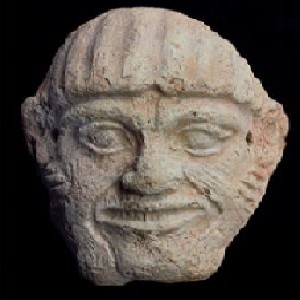Babylonia Collection Yale
The Babylonia Collection hosted by Yale University offers a carefully curated collection of ancient artifacts dating as early as the 4th millennium B.C.E up to the early Christian era. This collection includes tablets with writing, objects, and art that presents philosophical, administrative, and medical treatises. The collection is primarily clay and includes artifacts in languages such as Hittite, Akkadian, and Sumerian. The project also advocates for the conservation of pre-modern artifacts and works in conjunction with the Peabody Museum of Natural History.
The exhibit site offers a comprehensive database of the collection’s artifacts, and entries even go as far as to have images and measurements of the items. What makes this database significant is its filtering tools for looking through the artifacts hosted by the Peabody Museum of Natural History. The exhibit's outreach tab boasts an impressive array of ancient exhibits that promote artifacts from the ancient world. Some of these specific exhibits that are thematic within the museum have been Love in Mesopotamia and Preserving the Cultural Heritage in the Cradle of Civilization. Some of the exhibits' titles will open to an image, information, and news clippings about the exhibits. The exhibits promote the thematic nature and versatility of ancient artifacts and would be valuable for an educator to create lesson plans around the vast collection on display at this exhibition. Many of the exhibition events also highlight work within Neolithic and ancient scholarship, basing the artifacts around new books and research.
Another useful feature on the site is its publications sections, which hosts publications throughout different Yale programs, such as the Yale Oriental Series, Exhibition catalogs, and scans from The Goucher College Cuneiform Inscriptions. Some articles and publications have been linked to either the host site or a PDF of the book. This publications tab is also a very informative tab for T\texts from the Babylonia Collections, which link to scanned pages and cites texts that transcribe and help utilize the tablets and artifacts held within the collection. For a researcher who cannot head directly to the collection or a teacher who wishes to go over certain materials this reference list aspect of the site allows the collection to be utilized outside of the museum.
Lastly, something unique on this site is its current projects tab, which boasts a Mesopotamian recipe with step by step instructions for users to try at home. The recipes come from the collection and are reportedly 4000 years old. Their goal in having these recipes is to show the interdisciplinary approaches in using a collection that boasts different facets of ancient life, even cooking. The hosting of recipes is unique and promotes the versatility of the collection in terms of the different subjects one can find represented in the artifacts.
Overall, this collection is comprehensive and versatile in the artifacts that are under their care. The versatility of the collection makes it useful for any discipline that approaches the material to have a chance of finding artifacts or useful resources either for research or educational purposes. Overall the site is easy to approach and hosts a vast amount of information about the exhibit.
